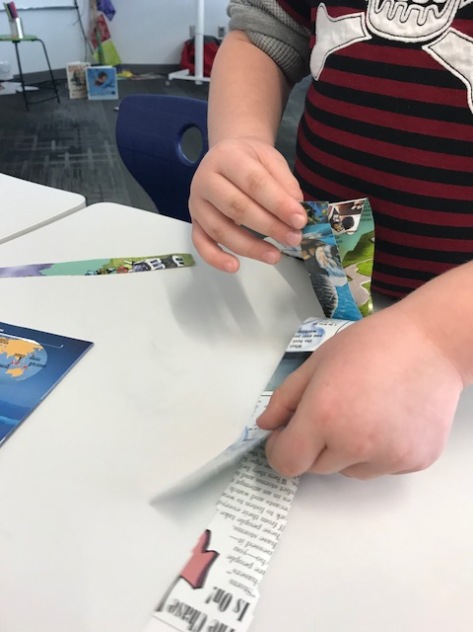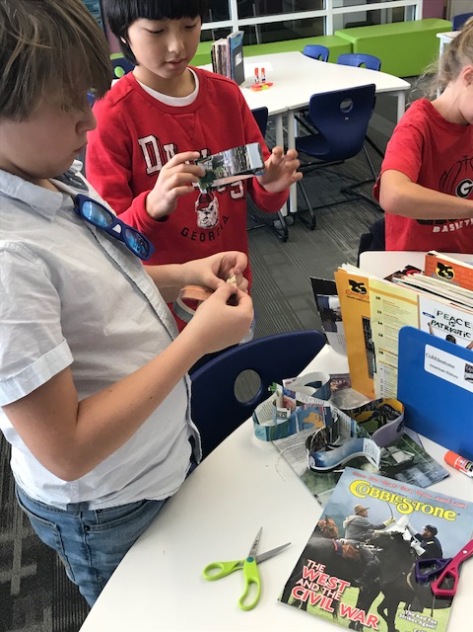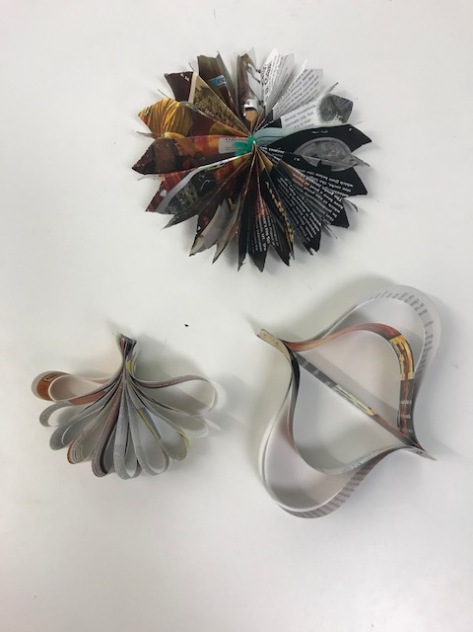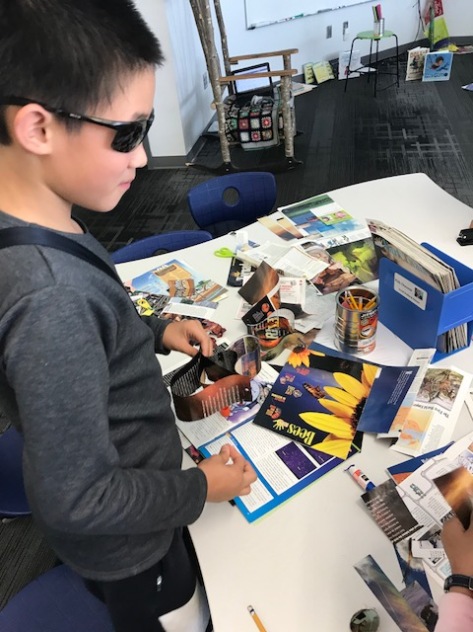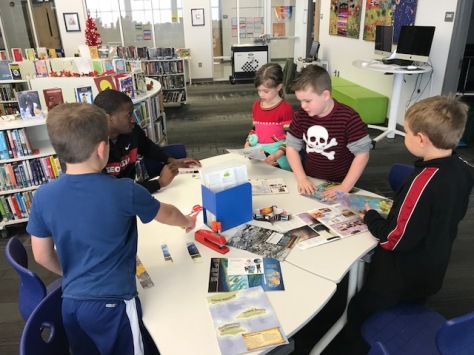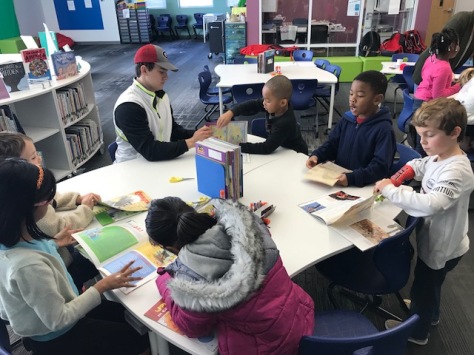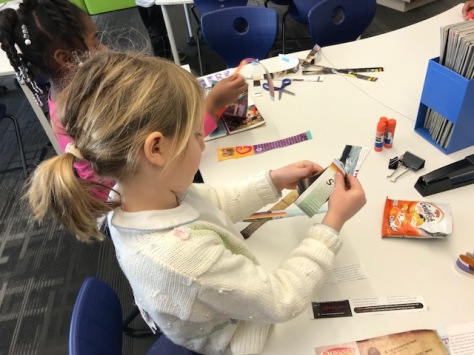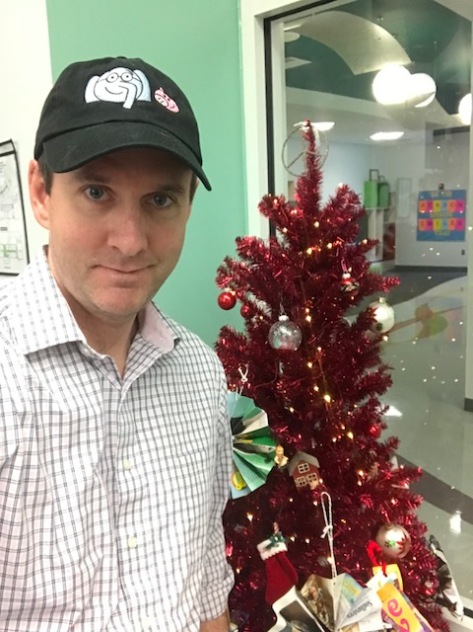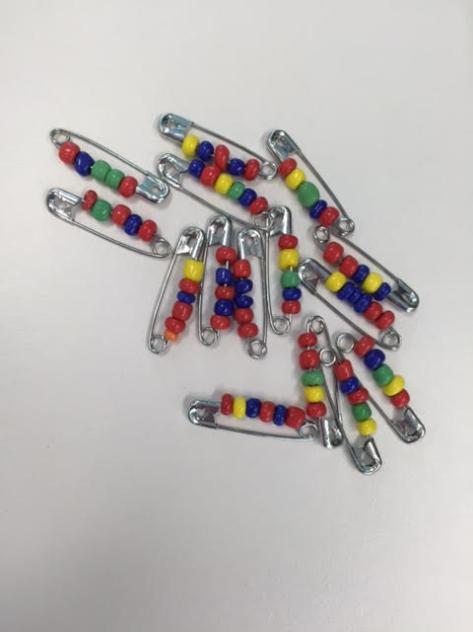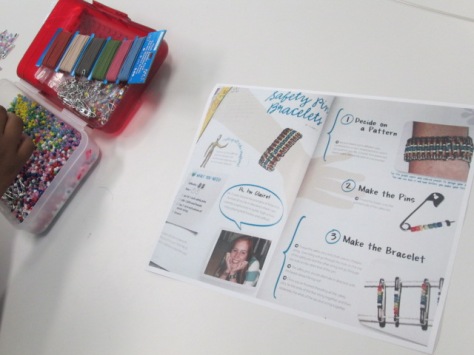
Our makerspace is taking a break for the next 2 months while we work on our student book budget project. We wrapped up November with a makerspace inspired by the book Doll-E 1.0 by Shanda Mcloskey. This book is about a girl who receives a doll that only says “mama”. She tries lots of ways to play with the doll but just can’t get past the fact that it only says one thing. Then, she figures out that she can hack the toy using her computer programming skills and a Makey Makey. As soon as I read this book last year, I wanted to do a makerspace with it. Then, the amazing Colleen Graves put together an instructables with step-by-step instructions on how to create a toy programmed with Scratch and controlled by Makey Makey. While we didn’t really follow all of Colleen’s instructions, we did have fun creating our own variations. Here’s a look at what we did.

For context, this took place during our open makerspace time on Tuesdays/Thursdays. Students sign up through their teacher via a Google Doc. We have four 30-minute segments which allows students from grades 1-5 to try out our month-long theme. Students from Gretchen Thomas’s maker class at UGA help facilitate each of the segments alongside me.
Session 1: Tinkering
Since students have a variety of experiences with Scratch and Makey Makey, we wanted all students to have some time to tinker with both tools. Our UGA students made some example toys out of toilet paper rolls, aluminum foil, copper tape, and a variety of other objects. We stationed these at tables with Makey Makey piano and Makey Makey kits. Students had an opportunity to tinker with how to hook up the Makey Makey as well as how to use the toy to play the piano on the computer. In another area, students practiced creating blocks of code in Scratch with events and sounds.
Session 2 & 3: Coding
In these sessions, students considered the sounds they would like their toy to make. They could record their own sounds or use the gallery of sounds located in Scratch. Each student made an account in Scratch and worked to code all four arrow keys and the space bar to correspond with the front of the Makey Makey. More advanced students could try out some of the extra pieces of code from Colleen’s instructions, but most students simply used an event block “when key is pressed” and a sound block “play sound until done”.

This was one of the most frustrating pieces of our project because with such as short time segment and students who couldn’t remember their email addresses and passwords, it took a long time to get accounts setup. Once we got through the initial setup, the coding wasn’t too bad, especially if students took the simple route.
Session 4: Toy Creation
In this session, students used toilet paper and paper towel tubes to create toys. We asked them to think about making up to 5 points of contact to connect their Makey Makey to. This was their first focus before adding details to give their toy character. Students used clothes pins, copper tape, brads, paper clips, aluminum foil, and other miscellaneous conductors.
We had a hot glue gun station with 5 glue guns to attach pieces. A UGA student stayed with the glue guns to facilitate safety.
Then, students used a variety of craft supplies to give their toy character: sequins, googly eyes, pom poms, feathers, etc.
I won’t lie. This was extremely messy and no matter how many hands I had helping or how many ways I tried to keep us organized, we ended up with supplies all over the tables, chairs, and floor.
As students finished their segment, we stored the toys in cardboard boxes by grade level.
Session 5:
This was the session to bring it all together. If students needed to finish coding or their toy, this was the session to do it. Then, their final goal was to hook up their toy to Makey Makey and see if their code worked. Many students realized that they had not created 5 separate contact points but had instead created contact points that touched one another. This resulted in 2-3 different sounds going off at one time. This was a good learning experience because they had to figure out a way to revise their design. If we had additional sessions this could have been expanded on but most just got to the beginnings of revision.
Our youngest makers in 1st grade didn’t quite make it through all of the steps since they had so much to explore and learn. In this final session, we hooked up the UGA student toys to the 1st graders’ code and also had a computer with pre-made code where they could try out the toys they had made. This was also true for students who had missed one or more sessions. We just couldn’t get through all the steps.
There were a lot of moments during this month where I wanted to pull my hair out and moments where I had to stop and take deep breaths. I had to remind students that I didn’t hold all the answers and I couldn’t show them every step to do. I find that this is a constant struggle. Students can figure things out if they just have the space and encouragement. Many of them stepped up, persevered through frustration, and helped their peers when they figured things out.
In the end, I learned a lot about what this might look like as a class or grade level curriculum based project. We could do so much with storytelling and writing with this project in addition to the science standards involved. The purpose of our makerspace wasn’t to have a polished product at the end. We wanted to have fun, problem solve, and invent while learning a lot about coding and circuits. I think we accomplished that, even if there were moments that felt messy and chaotic. I would do it again and try to do a bit more to keep us organized and moving forward. More days would definitely have been beneficial.


















